 "I was amazed by [Henry's] page on June in Capricorn. No longer June and Henry but something born of Henry's imagination. Henry describes himself as a puppet sitting on June's knees. And while he writes of her power, at the same time he crucifies her."
"I was amazed by [Henry's] page on June in Capricorn. No longer June and Henry but something born of Henry's imagination. Henry describes himself as a puppet sitting on June's knees. And while he writes of her power, at the same time he crucifies her."---- Anais Nin, January 1939; from
The Diary of Anais Nin 1934-39 (322)
"I learned what to do just as though I were part of her organism; I was better than a ventriloquist's dummy because I could act without being violently jerked by strings."---- Henry Miller in
Tropic Of Capricorn (235)
When
June brought Jean Kronski home and turned Henry into a third wheel in his own Remsen Street apartment in 1926, Miller's sense of powerlessness became embodied in a puppet made by Jean. The grotesque puppet went by the name
Count Bruga.
JEAN KRONSKI'S COUNT BRUGA
Jean Kronski's story will be covered in a post of its own one day. Suffice it to say that she was a Greenwich Village artist whom June declared a "genius" to a jealous Henry. Her creative endeavours included painting, sculpting, poetry writing, dancing and puppet making.
Henry and June were living in their Remsen Street basement apartment in 1926 when June brought home a puppet named Count Bruga, which Jean had created "to please" her (Nexus, p.118). After a period of carrying the marionette around with her everywhere, June eventually brought home the creator. The hive of tension that existed amongst this threesome is recounted in Crazy Cock, Plexus and Nexus. All the while, Count Bruga sat in a prominent position in the apartment, observing all with his creepy glare.
"[A]nd lying in a corner like an old mandolin was the Count and the Count had his ears cocked, straining to catch the gurgle of the drains, the fall of water falling, choked with ice and liquid fire and clots of blood and violets that muttered. " (Crazy Cock, p.200)
In Crazy Cock, Henry talks about the arrival of the puppet into his home, soon followed by a meeting with Jean Kronski ["Vanya"]:
"So this, he thought, is the Bruga woman, creator of that sunken-visaged, leering rake of a puppet which grinned at him night and day like a skulking lout." (p. 23)
Covering the same biographical material at the tail end of Plexus, Henry downplays Count Bruga, not even naming him. Puppets are presented as a crazy project the two women are engaged in; twice, Henry imagines the two of them running through the Village with "puppets in their arms." 
Henry grew frustrated with all of the galavanting, and one evening, in an event not portrayed in Plexus, he scattered his and June's love letters throughout the apartment and set up Count Bruga on the bed with their marriage certficate tucked under the puppet's one arm and divorce papers nestled under the other.
In Nexus, Count Bruga returns by name. He is described early on as a permanent fixture of Henry's environment. One evening, as Henry and June are about to depart on a peace-minded date, Henry observes her getting ready and notices:
"... above all, the puppet, that leering, degenerate-looking Count Bruga, which she was hugging to her bosom and which she meant to take along. 'No,' I said, 'not that, by God!' 'Why?' "Because....Goddamn it, no!'" (63)
Later in the novel, in the early hours before an important Christmas dinner, June and Jean return from a night of drinking, for which they'd brought along Count Bruga, who returned looking as if he had "taken a beating." June and Jean eventually sneak off to Europe together, but only June returns. Jean effectively disappears from their lives, but later, in the letters of Anais Nin (1931-32), we see that June still carried Count Bruga around with her. Anais was quite amused by the marionette (see Henry and June: From "A Journal of Love" -The Unexpurgated Diary of Anais Nin [1931-1932]).
COUNT BRUGA DESCRIBED

"[June] brought out a marionette, Count Bruga, made by Jean. He had violet hair and violet eyelids, a prostitute's eyes, a Pulcinella nose, a loose, depraved mouth consumptive cheeks, a mean, aggressive chin, murderer's hands, wooden legs, a Spanish sombrero, a black velvet jacket." (Anais Nin - Henry & June, p. 29)
"Count Bruga, that darling of a puppet, reposes on the bureau surrounded by Javanese and Tibetan idols. He has the leer of a madman quaffing a bowl of sterno. His wig, made of purple strings, is surmounted by a miniature hat, a la Boheme, inported from la Galarie Dufayel." (Henry Miller-Nexus, p. 8)
BEN HECHT'S COUNT BRUGA
 On meeting Count Bruga for the first time in Crazy Cock, Henry [Tony] is chastized by June [Hildred] for not recognizing it as a caricature of Maxwell Bodenheim, the "King of Greenwich Village Bohemians," as then-recently parodied in Ben Hecht's novel Count Bruga (1926) [they'd shared a friendship but this turned it sour; Bodenheim returned the favour by parodying Hecht in Duke Herring. Bodenheim was murdered in 1954.]
On meeting Count Bruga for the first time in Crazy Cock, Henry [Tony] is chastized by June [Hildred] for not recognizing it as a caricature of Maxwell Bodenheim, the "King of Greenwich Village Bohemians," as then-recently parodied in Ben Hecht's novel Count Bruga (1926) [they'd shared a friendship but this turned it sour; Bodenheim returned the favour by parodying Hecht in Duke Herring. Bodenheim was murdered in 1954.]
The blurb on the 1929 edition of Count Bruga states:
"COUNT BRUGA as a novel is as insensitive as a hangman, as vain as a monkey and as absurd as Sinbad. It recites what is intended to be the unreal and ironical history of a preposterous creature called Count Hippolyt Bruga. You will find it full of murders, terse seductions, amiable magicians, poets, fair though somewhat idiotic Ladies and a Grand Passion; all of which have been introduced into the narrative with Ben Hecht's customary respect for the noble art of fiction."
 In 1941, Henry and Anais discussed (via letter) the subject of Count Bruga.
In 1941, Henry and Anais discussed (via letter) the subject of Count Bruga.
ANAIS: (July 1941) "I am reading Count Bruga. I like it. It is imaginative and artificial."
HENRY: (July 1941) "Count Bruga! What a strange book for you to read. Jean Kronski used to rave about it. You remember the puppet June carried around? I don't remember a damned thing about the book any more-complete blank."
____________________________________
The pictures of the Count Bruga puppet on this post are taken from the film Henry & June (1990) [that is meant to be Jean Kronski in the top image]. You can read Count Bruga's lines from this film script here.
 Thanks to Dov on Flickr, we have a new Miller photo to see. Dov was at a flea market at Clignancourt when he spotted a stash of pre-70s press photos of celebrities making use of Air France. Apparently, these were issued by the PR department of the French Ministry Of Tourism. Is that Henry's German girlfriend Renate Gerhardt in the picture?
Thanks to Dov on Flickr, we have a new Miller photo to see. Dov was at a flea market at Clignancourt when he spotted a stash of pre-70s press photos of celebrities making use of Air France. Apparently, these were issued by the PR department of the French Ministry Of Tourism. Is that Henry's German girlfriend Renate Gerhardt in the picture?
 The Imperial Orgy
The Imperial Orgy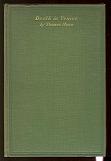
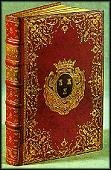 November Boughs
November Boughs The Mysterious Stranger
The Mysterious Stranger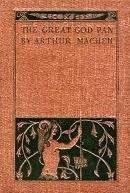
 As mentioned in
As mentioned in 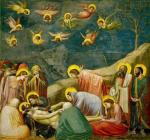



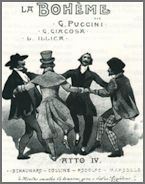

 None of the male students [isolated above] looks very much like Miller. There are twice as many names of graduates listed (including "Henry V Miller") than there are students, so maybe Miller just wasn't present. However, it's possible that one of the faces we see in there is that of his early love-interest, Cora Seward.
None of the male students [isolated above] looks very much like Miller. There are twice as many names of graduates listed (including "Henry V Miller") than there are students, so maybe Miller just wasn't present. However, it's possible that one of the faces we see in there is that of his early love-interest, Cora Seward.

 My reference copy of Nexus is the 1997 Grove Edition. I am not transcribing the entire text here. I will only reference words, quotes, names and subjects of note, sometimes providing full sentences where they serve to clarify context. Otherwise, you'll need to look these up in your own copy of Nexus.
My reference copy of Nexus is the 1997 Grove Edition. I am not transcribing the entire text here. I will only reference words, quotes, names and subjects of note, sometimes providing full sentences where they serve to clarify context. Otherwise, you'll need to look these up in your own copy of Nexus. 


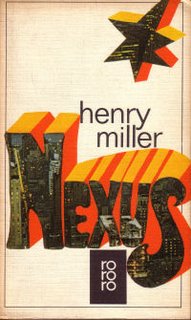


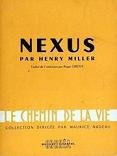

 A significant collection of Henry Miller's artwork and personal memorabilia will be auctioned both on-line during a live internet webcast and during a Direct TV broadcast on April 22, 2006 at 8 PM EST.
A significant collection of Henry Miller's artwork and personal memorabilia will be auctioned both on-line during a live internet webcast and during a Direct TV broadcast on April 22, 2006 at 8 PM EST.

 Also listed is the so-called "
Also listed is the so-called "
 A Pandora's Box has indeed opened, as James has noted in 'commentaries' on the
A Pandora's Box has indeed opened, as James has noted in 'commentaries' on the 









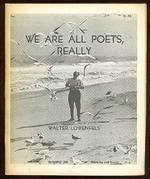




 On meeting Count Bruga for the first time in Crazy Cock, Henry [Tony] is chastized by June [Hildred] for not recognizing it as a caricature of
On meeting Count Bruga for the first time in Crazy Cock, Henry [Tony] is chastized by June [Hildred] for not recognizing it as a caricature of 
